Moore’s law drives all hi-tech and innovations.
“Computers in the future may weigh no more than 1.5 tons.” This was published in 1949 in Popular Mechanics, forecasting the relentless march of science. Computer manufacturing began in 1943. (Fig.1)

This optimistic statement appeared because semiconductor transistor had already been invented and began aggressively replacing huge vacuum electronic tubes in all devices including computers. Computers became smaller because a transistor is much smaller than a vacuum tube. Nevertheless, nobody could imagine that in about 10 years, Integrated Circuit (IC) would be invented and high volume microchip manufacturing would begin its fast development. IC technology allowed the accumulation of millions, and even billions, of transistors on a small piece of silicon. (Fig. 2)
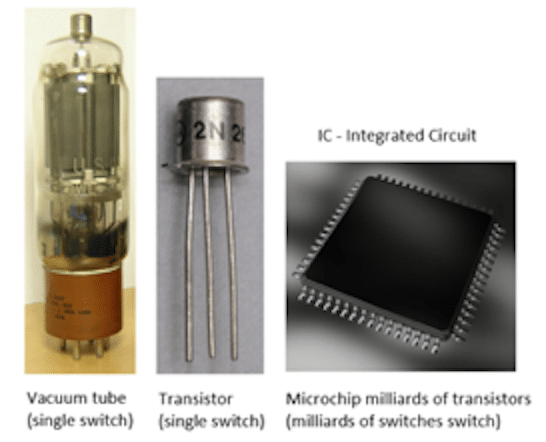
The implementation of IC processors dramatically reduced the size and weight of the computer and crucially changed our lives. Regarding the development rate of IC devices, Gordon Moore stated: “The number of transistors on a chip doubles every 24 months.”
For the last 50 years, just as Moore’s law has predicted, the number of CPU transistors has continued to grow, as shown in Fig. 3.
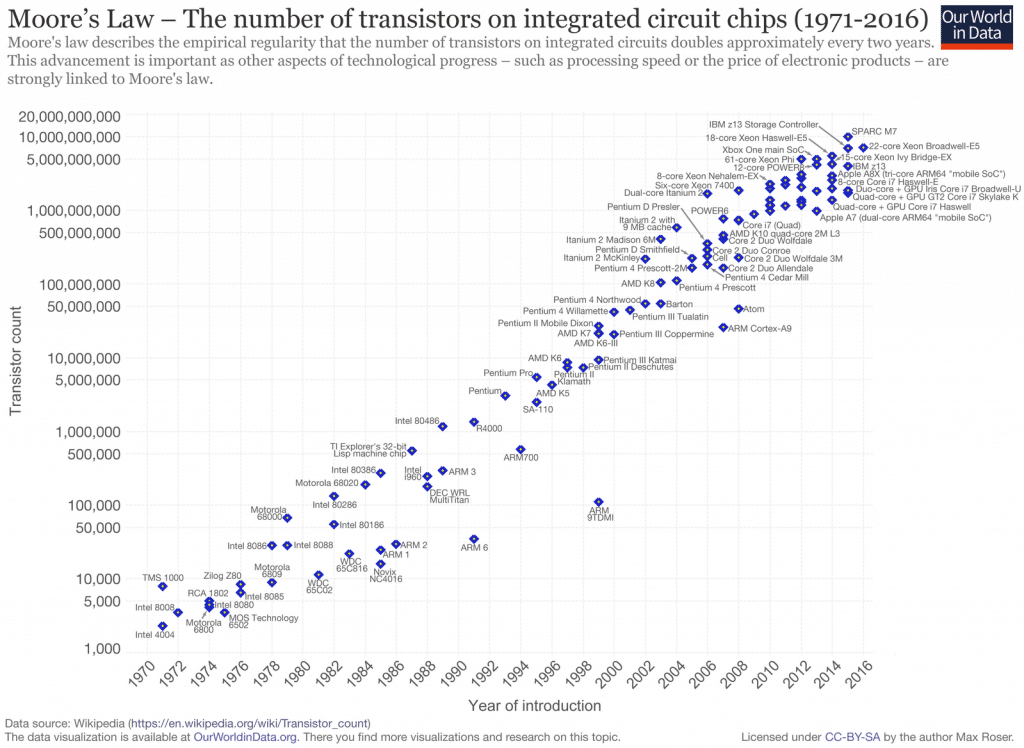
This evolutionary law is natural and logical. The implementation of new processors opens new opportunities for software development and for new applications. At a certain level, hardware becomes unable to support developing software and required applications. This problem is solved by the implementation of next-generation Central Processing Units (CPUs). This contradicting pace drives technology development to follow a constant pattern of about two years. If anyone thinks that Moore’s law applies only to CPUs, he is wrong. Moore’s law became the driving force of hi-tech, industry-related applications and changed our lives. Software development seems to be in correlation with Moore’s law requirements: both Complexity and Lines of Code trends are almost linear with the time. (Fig. 4)
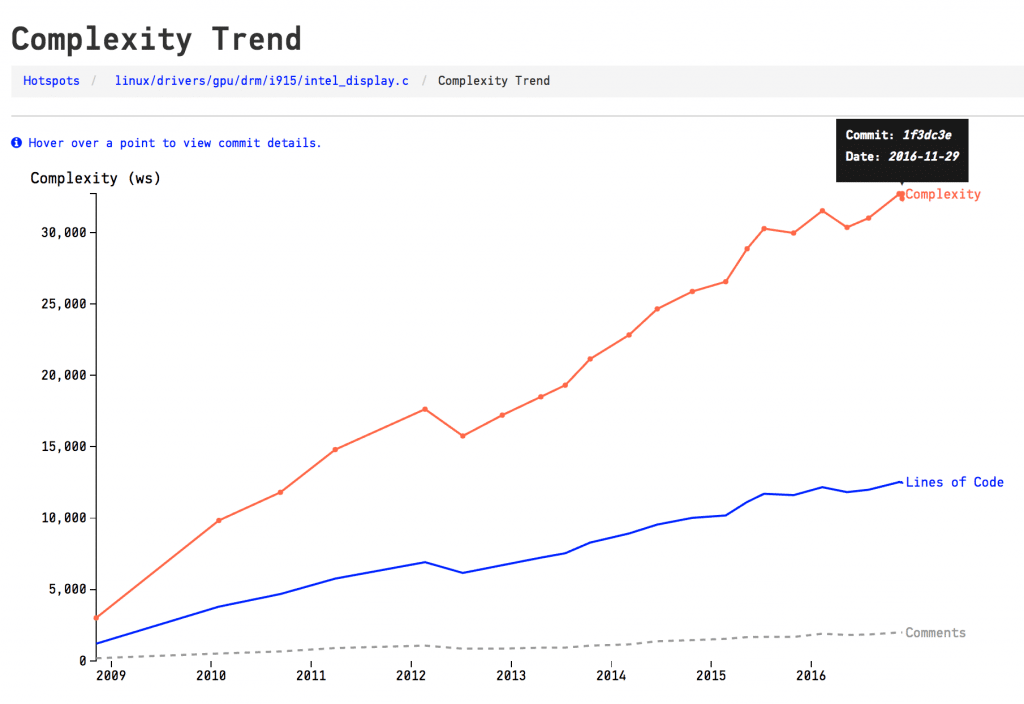
Moore’s law: Continuously increasing transistor density also affected the passive electronic components industry. An increased number of transistors on a single microchip increases passive component consumption and leads to miniaturization. Thus, tantalum capacitors of the same capacitance become smaller and smaller. This is possible when the specific charge of the tantalum capacitor-grade powder increases. A specific charge (CV/gram; where C – capacitance, V – formation voltage) depends on the powder particle size. Scanning Electron Microscope (SEM) images of capacitor-grade tantalum powder of high specific charge are shown in Fig. 5. The smaller the particles, the higher the specific charge that is achieved. As the reader can see, the specific charge of tantalum capacitor-grade powder increases systematically over the years.
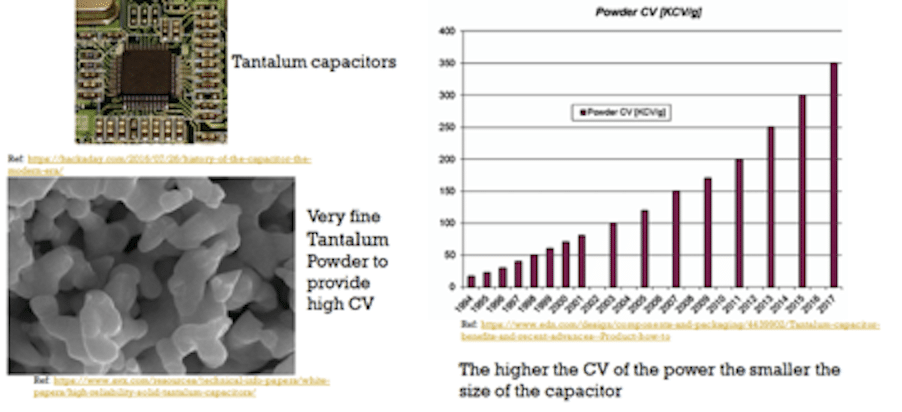
A similar trend is observed for resistors. For instance, thick film chip resistors become extremely small as consumption increases over the years. (Fig. 6.)
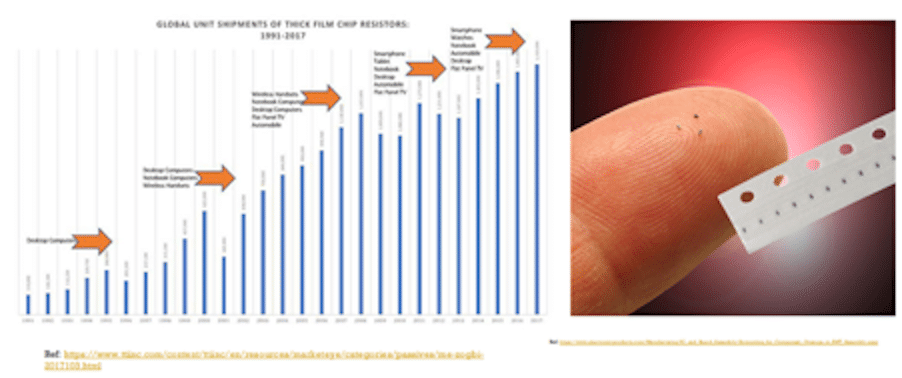
Therefore, as we can see, hardware and software are strongly impacted by Moore’s law due to the doubling of the transistor count in the device. What happened? How has Gordon Moore impacted engineers’ activity? What did he do? He just forced engineers to release outstanding innovation at least once every two years (Fig. 7.)

Forty or fifty years ago it was difficult to create innovations within every two years. However, modern devices and current processes became so complicated that engineers have to start well before two years, maybe five years or more. (Fig. 8.)
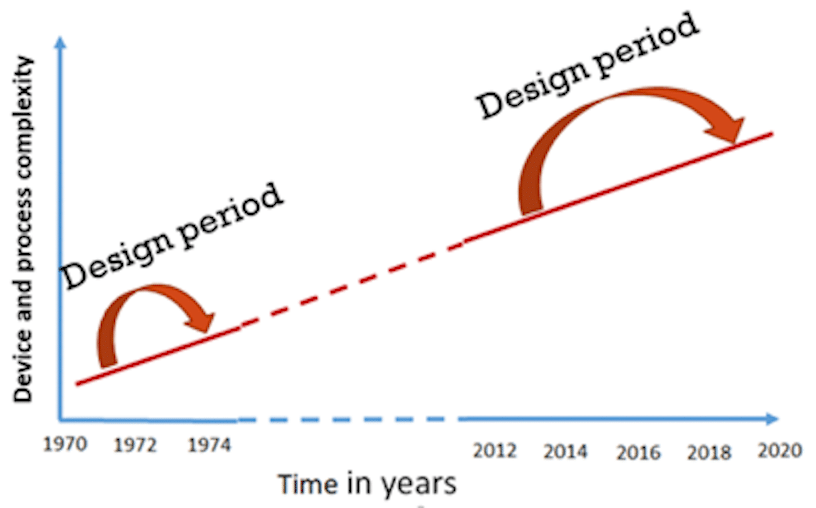
Modern device design needs to be started well before the release of the device — two years is simply not enough. The design should be started at least five years before the device is released. What does that mean? It means that designers should predict customer needs and software features that require inventive thinking and assistance of inventive thinking tools.
To produce new devices a novel process technology should be developed. What does that mean? It means that process development engineers should be able to predict the existence of new processes and the availability of required materials. It’s not easy, not easy at all.
There is no way to succeed without inventive thinking and problem-solving tools. As engineers, we should be educated enough to use inventive thinking tools and to be able to solve problems.
Our future rests in our ability to be inventive and to think differently.
LOGIN to PRIZ Innovation Platform and start your project.
עמוס רדליך
March 22, 2019
Inventive thinking and systematic problem solving is the key process to invent new products, process, and technologies. rankup.co.il
Anatoly
April 11, 2019
Amos,
Many thanks your comment.
Anatoly
Michael Nikiforuk
March 30, 2019
This is a fascinating “history lesson” – the evolution of technology is really impressive – and the minds (Gordon Moore) to so fully comprehend and predict the rate of change and the dynamics and implications of this change. We have (today) exponentially more power in our smart phones than existed in behemoth (legacy) mainframes – it is quite fascinating. To think today’s products are the result of such mindful insight and commitments that were initiated up to 5 years in advance is quite staggering – the financial and technical risks that were assumed are staggering – in an era of such rapid transformation. GREAT PAPER!!!
Anatoly
April 11, 2019
Michael,
Many thanks for your attention and for your comment. This is an example how people are changing world. Again and again, strategy is crucial. Wrong strategy can destroy everything, while cleaver strategy drives tactical steps into development and changing the world.
Thank you,
Anatoly